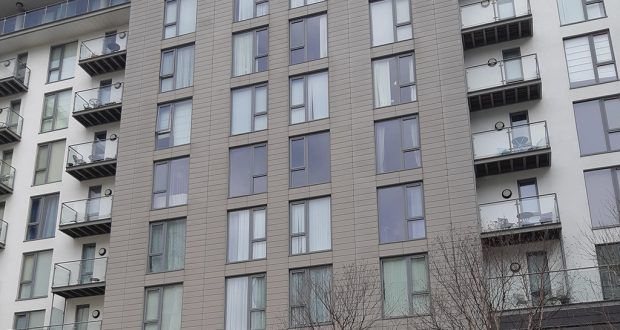Flammable material found in more than one in 10 blocks over 11 metres tall, and action is urged on smaller buildings, government figures show
Nearly 2,000 social housing blocks in England have “life-critical” external cladding problems, according to The Guardian.
T he data released earlier this month showed that 1,911 social housing blocks above 11 metres in height had been assessed as having “life-critical fire safety defects” linked to the materials in their external walls.
he data released earlier this month showed that 1,911 social housing blocks above 11 metres in height had been assessed as having “life-critical fire safety defects” linked to the materials in their external walls.
The figures highlight the scale of building safety problems across the country’s housing blocks, which were first exposed in the aftermath of the Grenfell Tower high rise tragedy in London in June 2017, when 72 people died.
The flammable cladding problems have been identified as the primary cause of the rapid spread of the fire on the council block, owned by the Royal Borough of Kensington and Chelsea.
Giles Grover, from the End our Cladding Scandal campaign, said the figures were “shocking” and spelled out just how widespread the building safety crisis is. “With private blocks, buildings with non-cladding defects and buildings under 11 metres, this only tells half the story, too.”
Separate government figures show that nearly 3,972 of private and social housing buildings above 11 metres have been found to have unsafe cladding.
The latest social housing figures revealed that only 181 (9%) of the buildings found to have these issues had had work completed to make the buildings safer, while 543 (28%) had started work. This means that 638 (33%) buildings had not seen work start, while a further 549 (29%) had no plan in place.
Matt Hodges-Long, the founder of the Building Safety Register, said there had been an initial focus on fixing high rise blocks, despite the industry calling for a far wider investigation into the safety of smaller buildings as well. He said: “It is no wonder social landlords are backed up with mid-rise remediation when they have spent so many years trying to fix their high-rise estate.”
Providers of social housing have forecast that 87% of identified buildings will be remedied by September 2028.
A Department for Levelling Up, Housing and Communities spokesperson said: “Following the Grenfell Tower tragedy, we have introduced some of the toughest building safety regulations in the world through our landmark Building Safety Act.
“We are making sure that buildings with unsafe cladding in England are made safe through investing billions of pounds in safety schemes, as well as self-remediation by developers and registered providers of social housing.
“We expect all registered providers of social housing to assess and remediate their buildings at pace, and we are working with regulators and the sector to make sure that this happens.”
